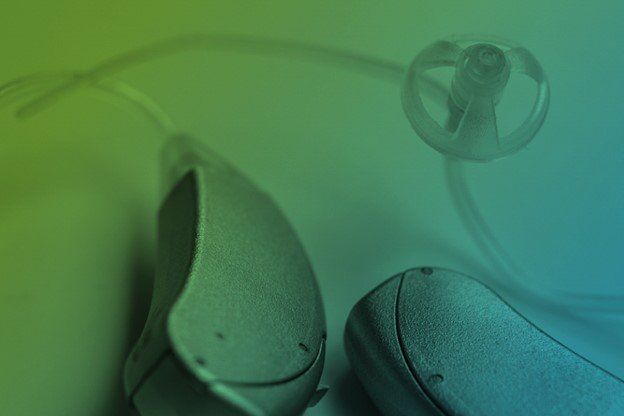Guide to Selecting Hearing Aids
Purchasing hearing aids can be an overwhelming task! Once you have decided on a specific style, it is then time to decide what features of the devices would be the most beneficial.
Benefits of Hearing Aids
Hearing aids are the first step to improving your communication abilities. The most significant benefit of using hearing aids is to improve audibility. When your hearing is impaired, the full spectrum of sound isn’t available to you. Hearing aids improve daily interaction.
Hearing aids can help with the localization of sound (that is, help us to determine where a sound is coming from). It also helps gives us a sensation of hearing balance: if your hearing sensitivity is different in each ear, they will help sounds become more balanced.
Research shows that being proactive with amplification can help us later in life as our cognition begins to change. It is easier for our auditory system to relearn how to hear using hearing aids as soon as we start to experience hearing loss. If hearing loss is left untreated, we experience deprivation for a longer time and may not relearn how to hear as well.
Improvement in concentration and reduction of strain is another common positive effect of using hearing aids. When we stimulate the auditory system with what it was missing, it takes less working memory to hear or listen. This can result in improved attention.
Some individuals may isolate themselves from certain social settings, gatherings and public functions due to the fear of “not hearing.” Hearing aids can increase an individual’s confidence in those areas and encourage involvement once again in those environments because now they “can hear!”
Hearing loss can affect how we live our daily life. Compensating for that hearing loss with hearing aids can restore a sense of independence and self-empowerment. It is good for the soul to feel in control in our day-to-day activities.
Levels of Technology
The level of technology in hearing aids has the greatest impact on how you will hear with hearing aids and the level of technology in hearing aids will determine their price.
All major hearing aid manufacturers usually have around four different levels of technology. These levels of technology exist independent of style (how the hearing aids look) and features (such as connectivity). The four levels of technology are:
- Advanced
- Intermediate
- Basic
- Economy
Hearing aids are run by amazing miniature computers. The technology level in a hearing aid determines the ability for the computer to process sounds, which translates to how hard the hearing aid will work to help you hear in challenging situations and keep you comfortable in noise.
We are often asked what level of technology we recommend. If price is not a consideration, we always recommend hearing aids with the most advanced technology. These hearing aids have the fewest limitations and tend to result in the best possible hearing experience. However, the decision also needs to consider your lifestyle, your hearing challenges and your budget.
Advanced hearing aids are engineered with all the latest sound processing technologies. These capabilities include precise matching of the volume to the wearer’s hearing loss, the best reduction in unwanted whistling, the purest sound in challenging environments and the optimal reduction in background noise with the least impact to understanding speech.
In each subsequent level of technology, capabilities are removed. Every step to intermediate, basic and economy levels compromises the technological capabilities for reductions in price. Depending on your lifestyle and communication needs, your clinician will outline the technologies that will make the biggest difference and will contribute to success with your hearing aids.
Advanced
- The best available technology.
- Provides the most precise correction of your hearing loss.
- Provides better hearing in the greatest variety of listening situations.
- With the most resolved sound quality and least number of limitations due to the advanced computer chip.
- Equipped with the most advanced automatic functions usually resulting in the most hassle-free use.
- Warranty for 3 to 4 years.
Intermediate
- Some of the advanced features have been removed, resulting in a lower price.
- Less precise correction of your hearing loss compared to an advanced hearing aid.
- Automatically adapts to fewer situations compared to an advanced hearing aid.
- Warranty for 3 years.
Basic
- More features have been removed.
- There is some automatic adaptability.
- There is less precise correction of your hearing loss compared to an intermediate hearing aid.
- Warranty for 2 to 3 years.
Economy
- The least number of automatic features.
- Limited range and precision of correction.
- Lowest cost option.
- Warranty for 2 years.
Hearing Aid Options
Because of the advances in hearing technology, you have many options. To help you choose the right style, keep the following factors in mind:
- Ear size
- Degree of hearing loss
- Aesthetic look
- Ease of use
- Communication needs/expectations
- Price
Hearing Aid Costs
When purchasing a hearing aids, the cost of the device is mainly dependent on the technology level. At the Audiology Clinic of Northern Alberta, we like to complete an individual communication plan for every client considering hearing aid technology. In that plan we discuss everything from style, budget, options for hearing aid funding, expectations of the technology, lifestyle requirements, warranties and available accessories.









